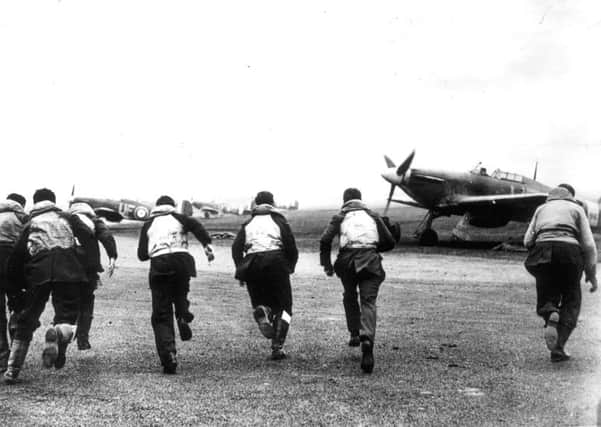William Loneskie: No audition needed for leading part '“ it's plane


It’s no wonder he has recognised the potential in bringing events of 1940 to a new audience: the Battle of Britain was the most vital battle in Britain’s history.
Alone, and expected to surrender within weeks, Britain fought for her survival and inflicted the first defeat on the hitherto invincible Wehrmacht. The RAF prevented invasion, and prepared the ground for ultimate victory over the Nazis.
Advertisement
Hide AdAdvertisement
Hide AdBut which aircraft will have the starring role in Ridley’s film?
In the popular mind it was the Spitfire which carried the day for the RAF. The grace of R J Mitchell’s design was appreciated by the public and the pilots as something very special.
But it was the slower Hawker Hurricane which killed most of the German pilots and crew and destroyed most of their Heinkels, Junkers, and Dorniers. There were 32 squadrons of Hurricanes in the Battle of Britain compared with 19 of Spitfires. But the two machines, both powered by the iconic Rolls-Royce V12 Merlin, were very different. The Spitfire with its elliptical wing and perfect proportions “looked as if it could fly”, as Sergeant Cyril Bamberger of 610 and 41 squadrons said. The Hurricane, if not quite an ugly duckling, had an ungainly appearance.
While the Spitfire was of all-metal construction, the Hurricane’s structure was a halfway house between fabric covered biplanes and all-aluminium monoplanes. An unintended consequence was that German cannon shells could pass straight through without exploding. Its pilots soon realised that the Hurricane could take a lot of punishment, and the ground crews, the unsung heroes of the battle, could often repair the aircraft on station, unlike the Spitfire which was a difficult aircraft to produce, maintain and repair.
Getting airborne in a squadron scramble, or landing on a grass airstrip, the Hurricane was safer than its compatriot because its undercarriage opened outwards, making its track wider. The Hurricane could also out-turn a Messerschmitt Bf109 and a Spitfire and its thick wing allowed a different configuration of its guns, giving a closer concentration of fire at a rate of 19 rounds per second.
In the air the Hurricane became a killing machine. Flight Lieutenant Peter Brothers of 32 and 257 Squadrons said: “It was a superb combat aircraft…it was a better gun platform than the Spitfire.” Squadron Leader Tom Dalton Morgan said: “As a fighting machine I preferred the Hurricane”.
Hurricane pilot Flight Lieutenant James Nicolson of 249 squadron received Fighter Command’s only Victoria Cross. Paisley-born Squadron Leader Archie McKellar and Czech Sergeant Joseph Frantisek were the highest scoring RAF pilots in the Battle. Both flew Hurricanes.
The Spitfire may be the movie makers’ popular choice, but the award for best leading character should surely go to the Hurricane.
William Loneskie MA (Hons), DipEd is a retired geography teacher. He lives in Oxton, Lauder.